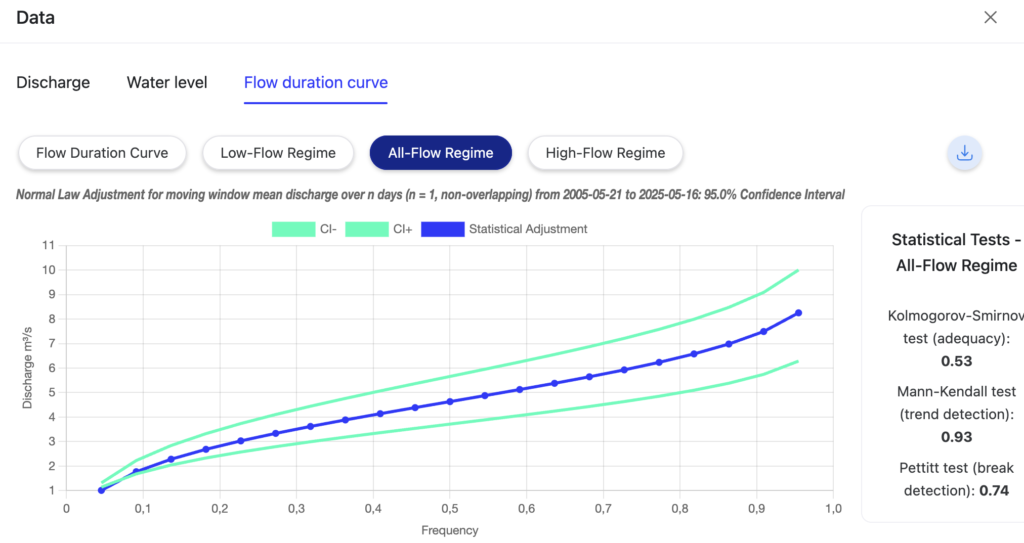Validate river data with 3 key tests: KS (model fit), MK (trend), and Pettitt (break). Simple tools, powerful insights. #hydrology
In hydrology in general and upon receiving your flow duration curve data from BWI in particular, we suggest you rely on statistical tests to check before you jump to conclusions:
Look if the model or distribution is adequate
Check if there’s a long-term trend
Verify if there’s been a sudden change in the data
Here are three essential tests we’ve integrated into the user interface to help water resource engineers and scientists make confident recommendations to their decision-makers:
*** Kolmogorov-Smirnov test (KS) for model fit ***
Is the chosen statistical distribution appropriate?
This test checks how well the flow data matches a theoretical distribution (like the Normal distribution). If the test doesn’t reject the hypothesis, it means the model is a good fit — within a confidence level (typically 90% or 95%).
*** Mann-Kendall test (MK) for gradual trend ***
Is there a significant trend over time?
This non-parametric test looks for upward or downward trends in the data series. A high p-value means no clear trend was detected — again, within a given level of statistical uncertainty.
*** Pettitt test for sudden shift ***
Was there a sudden change or “break” in the time series?
This test detects change points — moments where the average or behavior of the series shifts. If the change is significant, it may be linked to major hydrological events or infrastructure changes.
To wind up, these statistical tests are now automatically applied in BWI to our flow duration curve subscribers. They’re simple but powerful statistical tests to assess the robustness of a flow duration curve generated by BWI, for better decision-making in water management, infrastructure resilience, and climate adaptation.
This feature was inspired from French public hydrological datasets dissemination portal called HydroPortail (example here) to:
Confirm model reliability
Identify climate or anthropogenic trends
Detect possible data quality issues
Thank you for the inspiration, HydroPortail!
